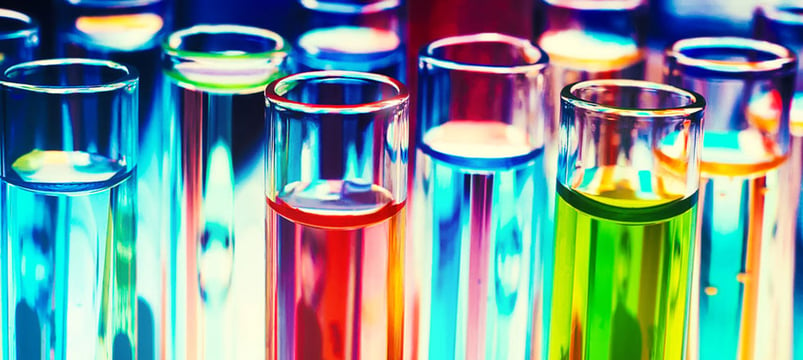
In addition to infectious diseases and muscle injuries, dental professionals encounter a number of workplace hazards. Dental staff are exposed to toxic chemicals throughout the day, including those found in products used to clean and disinfect instruments and surfaces. Long-term exposure can increase the risk for developing life-threatening diseases and allergies, which is why it’s important to take the necessary precautions when working with these chemical hazards:
Glutaraldehyde
USES/MATERIALS: Glutaraldehyde is widely used as a cold sterilant to disinfect and clean heat-sensitive equipment. It is found in desensitizers, high-level disinfectants and sterilants.
RISKS: Glutaraldehyde is toxic and a strong irritant. Exposure to glutaraldehyde causes severe eye, nose, and throat irritation, as well as headaches and drowsiness. It is the main source of occupational asthma among healthcare providers.
ALTERNATIVES: Glutaraldehyde-free desensitizers and high-level disinfectant solutions are available.
Phenols
USES/MATERIALS: Phenols are used as a disinfectant and antiseptic and can be found in some infection control products, including surface disinfectants.
RISKS: The Environmental Protection Agency lists disinfectants that contain phenols as “corrosive and toxic.” Exposure to phenols causes irritation of the skin, eyes and mucous membranes.
ALTERNATIVES: PureLife does not carry any products that contain phenol. Alternatives include BioSURF Surface Disinfectant from Micrylium, which kills TB in 50 seconds and does not contain any harmful phenols or aldehydes.
Triclosan
USES/MATERIALS: Triclosan is an antibacterial agent found in many hygiene products, including toothpastes, hand soaps, hand sanitizers and lotions.
RISKS: Studies have suggested that triclosan may disrupt hormones that play an important role in reproduction and development, while other research indicates that triclosan may contribute to the development of drug-resistant bacteria. The FDA is currently evaluating its safety, but has found no evidence to support triclosan as being more effective than plain soap and water in preventing the spread of diseases. Minnesota has already passed a bill that will ban the use of triclosan in most retail hygiene products beginning in 2017.
ALTERNATIVES: Toothpastes that contain stannous fluoride are effective alternatives to triclosan.
Latex
USES/MATERIALS: Latex is most commonly found in gloves. Other dental materials that contain latex include latex dams, gutta-percha, mixing bowls, orthodontic elastics, some suction tips, bite blocks and amalgam carriers.
RISKS: Healthcare workers exposed to latex gloves and other latex-containing medical devices are at risk of developing latex allergy. Adverse reactions can be classified as true latex allergy (Type I hypersensitivity) or allergic contact dermatitis (Type IV hypersensitivity). True latex allergy is a reaction to the latex proteins. These proteins can infiltrate the body through skin and mucosa. Reactions can range from erythema and hives to anaphylaxis, a potentially life-threatening condition. Conversely, allergic contact dermatitis is a reaction to the chemical additives used in the manufacture of latex gloves. Symptoms take several hours to develop, and include swelling, redness, itching, and blistering/cracking of the skin.
ALTERNATIVES: Staff with true latex allergy require the use of non-latex gloves, such as nitrile, neoprene or vinyl. Staff with allergic contact dermatitis require the use of vinyl gloves, as nitrile and neoprene gloves contain the same chemical additives found in latex gloves.





